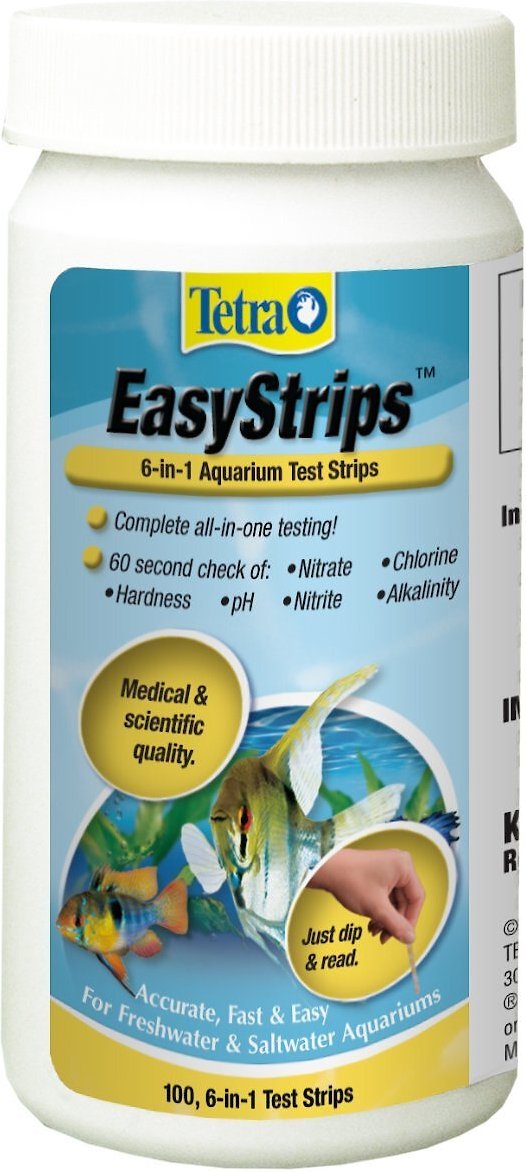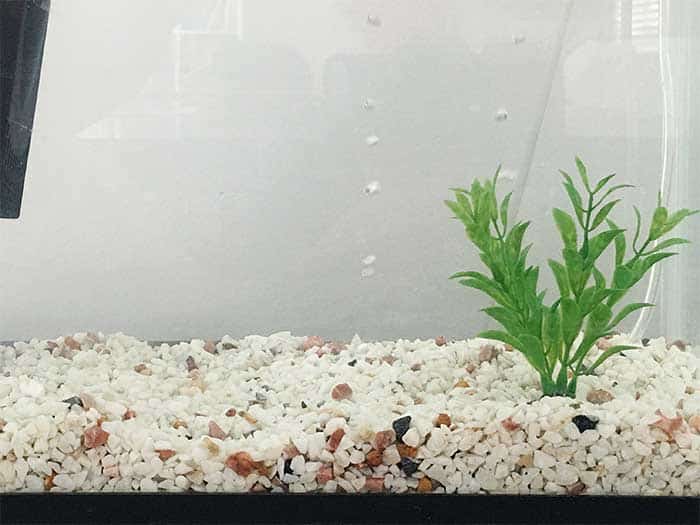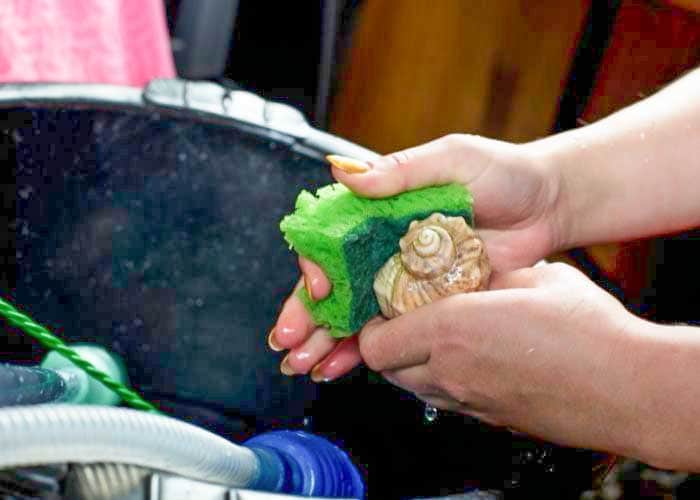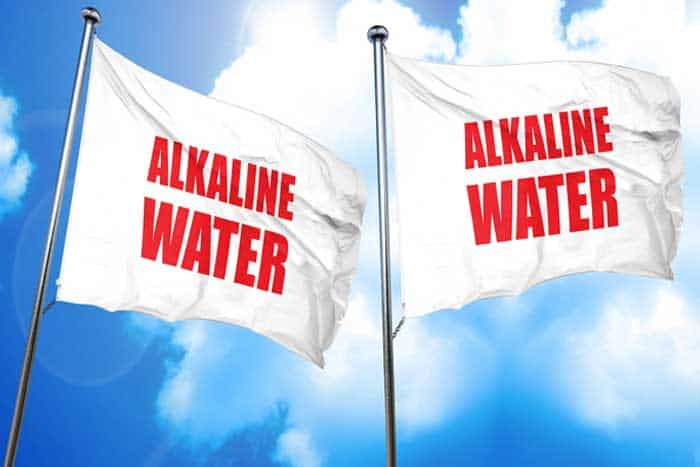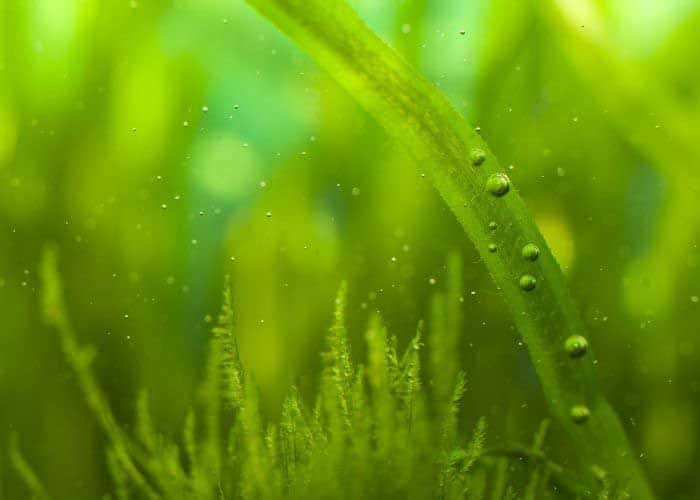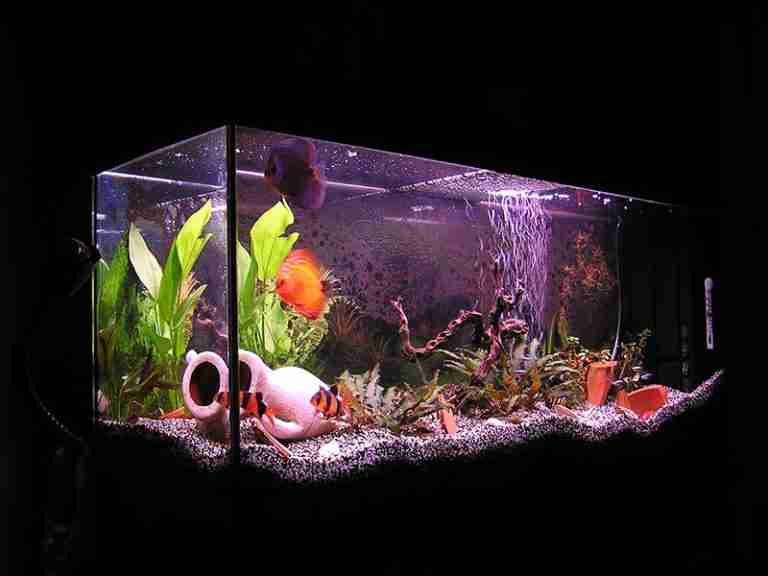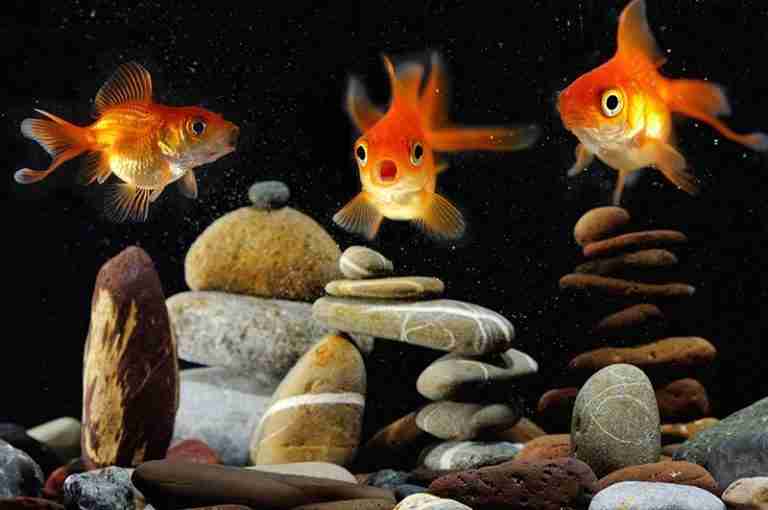How To Cycle A Fish Tank In 24 Hours (Emergency Cycling)
There are several reasons why you might want to know how to cycle a fish tank in 24 hours. Maybe you just bought a new tank and set it up but forgot to purchase or add a cycling agent, or perhaps you have an emergency and need to get your fish tank up and running as quickly as possible.
Whatever your reason for learning how to instantly cycle a fish tank, you should know some essential things. This article will explain the basics of fish tank cycling, the best ways to cycle your fish tank quickly, and when to employ these methods.
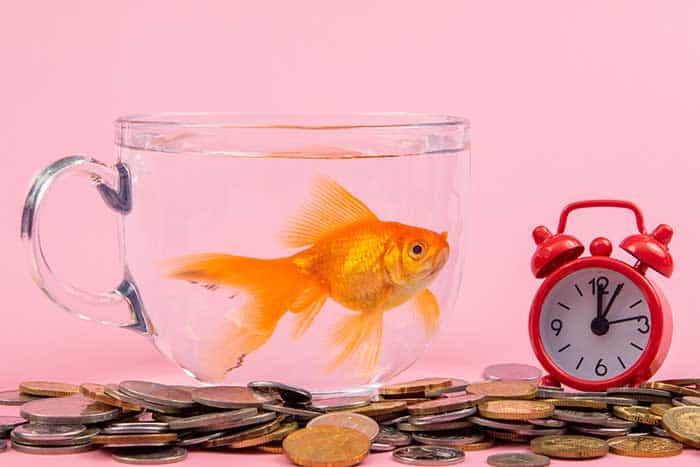
I have also written an article: How to cycle a fish tank (Step by Step), which will take you step-by-step through the usual cycling process of a new tank and many other ways of cycling an aquarium.
Can You Cycle A Tank In 24 Hours
The short answer is yes, you can cycle a fish tank in 24 hours, but this doesn’t mean that you should, especially to a new tank. A standard fish tank cycle would usually take around 10-14 days (or longer) before a tank would be ready for fish to be added.
The tank cycling process requires several components. All components will mostly occur naturally over the suggested 10-14 days, but there are a few ways to speed up the process.
I will briefly explain the necessary components of a cycled tank before providing you with some ideas on how to cycle a fish tank quickly.
Fish tank cycling is a term used to introduce a natural, biological cycle within your fish tank. This natural cycle is created through the presence of beneficial bacteria and other natural substances in your aquarium, which the beneficial bacteria can feed off.
If the natural cycle cannot complete because specific processes cannot occur, an aquarium’s water parameters would probably not be suitable for most fish to survive.
Cycling a fish tank is generally the same for a freshwater tank and a saltwater tank, with similar bacteria developing naturally and carrying out specific processes.
Nitrification
One process is “Nitrification,” where specific “beneficial” bacteria feed on harmful ammonia caused by fish waste and rotting fish food. The ammonia is eventually converted into nitrites.
Nitrites are much less harmful to fish, however, these nitrites are further broken down by other beneficial bacteria into nitrates that are the least toxic to fish except in large amounts.
The main bacteria responsible for ammonia to nitrate is “Nitrosomonas,” The main bacteria responsible for nitrite-to-nitrate conversion is “Nitrobacter.”
The Nitrogen Lifecycle
The process described above is called the nitrogen lifecycle. It is a little more complicated than I have detailed, however, you do not need an in-depth understanding of the process to be successful.
Just understand that the nitrogen lifecycle is necessary in a fish tank, and for it to take place, your tank needs several types of beneficial bacteria and ammonia-producing waste to feed the beneficial bacteria so that they can thrive.
Nitrates are the final stage of the nitrogen lifecycle. Nitrates are an excellent food source for live plants, and you can also remove excess nitrates through water changes.
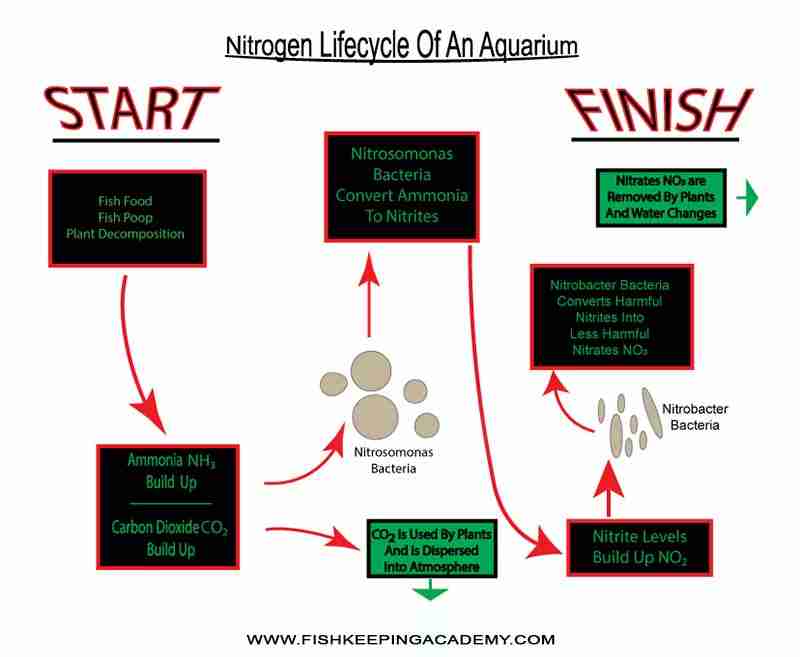
How To Cycle A Fish Tank In 24 Hours
You need to follow several steps to cycle a fish tank in 24 hours.
The below steps will show how to cycle a new tank quickly:
- Set your tank up as desired with the substrate, a heater and filter, then add some water. You will need to treat the tap water with a good water conditioner to remove chlorine and other harmful chemicals which will kill or inhibit the growth of the beneficial bacteria that you are about to introduce.
- Heat the aquarium water to between 68°F and 85°F, which is perfect for bacteria growth. If the water becomes too warm, it will be starved of oxygen which bacteria will need to survive. If the water becomes too cold, bacteria growth with slow substantially.
- Try to establish a pH level of between 7 and 8, which will encourage bacteria growth. You can read the article: Fish Tank pH Levels for a better understanding of how to reach a suitable pH.
- Add some commercially available bottled bacteria to the water and filter media. This is the same bacteria that would develop naturally in a tank if cycled over time. Adding bacteria manually will speed up the cycle time substantially.
- Add some waste in the form of rotting fish food or fish poop. These will both produce ammonia which bacteria will need to feed on.
- Add some live plants to your tank to encourage oxygenation and aid the removal of nitrates once the ammonia has been nitrified.
- Use a testing kit to monitor the ammonia levels in your tank to see if they are stable or decreasing. Decreasing ammonia levels and rising nitrate levels will indicate that the nitrogen cycle is happening correctly. Ammonia and nitrite levels should be at 0 ppm (parts per million) before you add any fish.
- Once ammonia levels have reached 0 ppm, you can add a small number of hardy fish species to start with. Adding fish is the final stage of the tank cycling process, and these fish will naturally produce waste and help continue the nitrogen cycle.
Even by following the steps above, there is no guarantee that the cycling process will happen in only one day, however, there are a few more tips below that can speed up the process further.
- Use some water from an established, cycled aquarium.
- Borrow a filter from an established aquarium.
- Borrow some of the filter media from a filter in an established, cycled aquarium.
- Use substrate from an established aquarium.
- Add an ammonia source like ammonia-rich water from another tank.
Let’s take a more in-depth look at some of the methods listed above.
Use Water From An Established Tank
Using some of the water from an established tank also introduces some of the beneficial bacteria needed to cycle your tank. Using an established aquarium’s water does not guarantee that all bacteria needed to cycle your tank will be transferred, but it is a good place to start.
Borrow A Filter From An Established Tank
If you borrow a filter from an established tank, you will also be transferring some of the beneficial bacteria necessary to cycle your tank.
Filters effectively hold and transfer bacteria to new tanks, as long as you don’t clean the filter media before using it. Cleaning the filter media will remove much of the bacteria it holds.
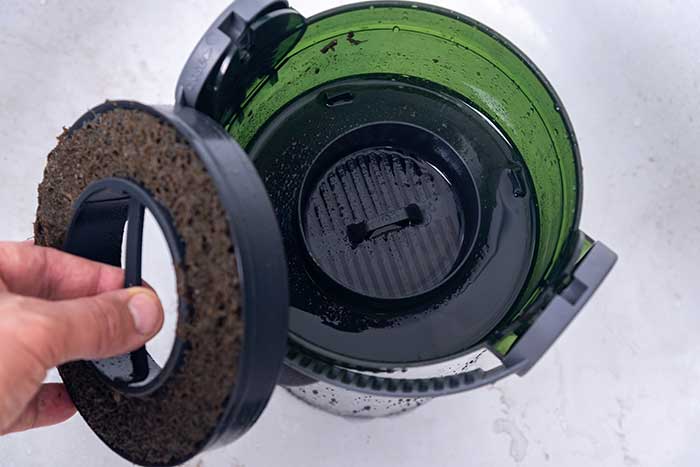
Borrowing already cycled filter media, such as sponges, and putting them inside your filter will have the same effect as using a complete filter from a fully cycled tank. Sponges are great at holding high levels of friendly bacteria.
Use Substrate From An Established Tank
Another way to introduce some beneficial bacteria needed to cycle your tank is by using some substrate from an established aquarium.
Like water or filter media, using substrate from a cycled tank will introduce some of the bacteria needed to cycle your tank. The substrate will hold a high amount of bacteria, but it is not as effective as using a filter or water from an established tank.
Use Commercially Available Bottled Bacteria
Several commercial brands sell bottled live bacteria to help cycle a tank in 24 hours.
Using bottled bacteria is a sure way to kick-start the cycling process. Adding beneficial bacteria from a bottle is designed to speed up the process of cycling a tank and will work best when used with some of the methods listed above.
It is important to note that not all bottled live bacteria are created equal. Some of the cheaper brands may not work as well as more expensive brands.
What I Use
There are 2 bottled bacterias that I have used myself and can recommend, which are API QuickStart, Fritz Zyme 7 for Freshwater, and Fritz 9 for Saltwater. I have included links below.
Add Ammonia-Causing Fish Or Food Waste
Once bacteria grow in your tank, the nitrogen lifecycle can begin. Still, you will need to feed your bacteria by adding an ammonia source from another tank or adding ammonia-producing waste products such as fish poop or rotting fish food.
By feeding the bacteria, it will start to multiply quickly, and it won’t take long before there are enough bacteria to keep ammonia at an acceptable level for fish.
Once fish are introduced to the aquarium, they will produce enough ammonia-causing waste to keep the bacteria levels high and the cycling process going.
It will be best to use a combination of the methods above to cycle a fish tank in 24 hours. Remember that these are temporary methods, and once your aquarium has cycled, you should no longer need to use them. Your tank will sustain the natural cycle by itself with the proper care.
Reasons For Emergency Cycling Your Fish Tank
Knowing how to cycle a fish tank quickly is a valuable skill to have in your fish-keeping arsenal, but a regular cycle over a few weeks will always be safer for your fish and will establish a much better natural balance.
A typical cycle will often take between 1 and 2 weeks to complete, so why would you need to learn how to cycle a tank in 1 day?
Cycling a fish tank in a day should only be done in emergencies, never just because you are impatient.
A few emergency examples I can think of are:
- Major contamination of your tank water requires decontamination and a complete water change.
- A parasitic outbreak that requires the use of a hospital/quarantine tank, but you are unable to borrow water from the infected tank.
- You have just started to add fish to your new fish tank, and the ammonia levels are already off the chart.
- Your water pH may be unsettled, caused by waste build-up, which is not controlled. Healthy bacteria will break down waste and stop alkaline levels from rising.
- Your fish tank may become cloudy due to a bacterial bloom, especially after a water change. A bacterial bloom is actually part of a new cycle already happening.
None of these situations are ideal, but they can happen, and it is important to be prepared. In any of these cases, knowing how to cycle a tank in 24 hours will help you get your tank back on track as quickly as possible.
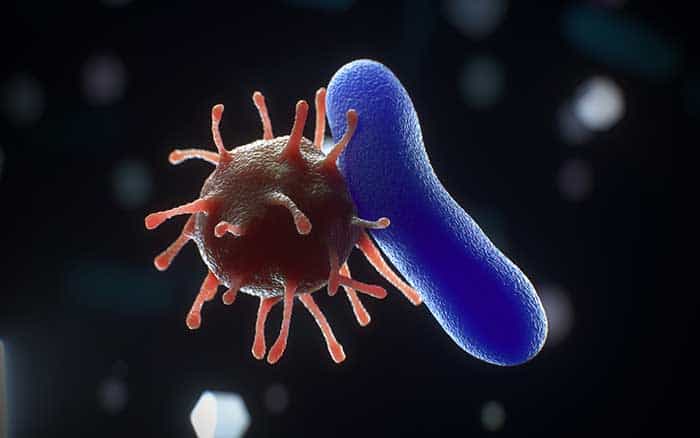
Most of the examples above may require you to emergency cycle your tank while fish are already in it, so you must get a good level of healthy bacteria in the tank as soon as possible to avoid a build-up of ammonia which may kill your fish.
You would typically perform a fishless tank cycle, but the process of cycling with fish already in the tank is aptly named “fish-in cycling” and is often necessary for many emergency scenarios.
Emergency Fish-In Cycling
Most tank cycles would not be considered an emergency unless you already have a stock of fish within the tank that is at risk of ammonia poisoning or other severe illness.
Fish-in cycling can speed the cycling process up, but there are risks to the fish because they will be in a potentially toxic environment. All of the examples I have given throughout this article will boost the natural process of the formation of bacteria.
By having fish in the tank, they will naturally produce the waste products that can contribute to and feed bacteria growth.
The most important thing you need to do with a fish-in cycle is to continually check your water quality parameters. Zero ammonia is required for your fish to be safe, so until you have acquired a high enough level of nitrifying bacteria, you will need to keep ammonia levels as low as possible by carrying out regular water changes.
If you don’t already have any water parameter test strips, you will need some. They are relatively inexpensive and can be purchased with 100 or more strips in a container. Most test strips will measure all the important parameters, such as ammonia, nitrates, nitrites, and chlorine.
The test strips I recommend and use myself can be found below.
Tetra Easy Strips x 100
Tetra Easy Strips are a 6 in 1 test for your freshwater or saltwater aquarium.
Check your water parameters in as little as 60 seconds.
Tetra Easy Strips will measure levels of chlorine, nitrate, nitrite, general hardness, alkalinity, and pH, which are easily checked on the included color chart.
Wrap Up
Hopefully, this article has explained why you may need to carry out an emergency tank cycle and helped you to understand why a lengthier cycle is far more beneficial and safer in the long term.
Emergency cycles are sometimes necessary, so the tips above may save you from total fish loss, but should only be used as a last resort.
Cycling a fish tank in 24 hours is not a difficult task, but it is important to understand why you are doing it and to take the necessary precautions to keep your fish safe.


